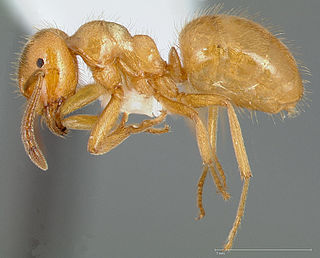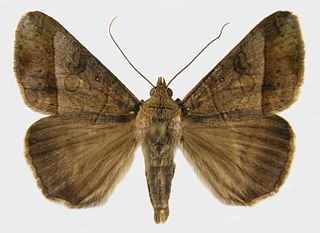
The Japanese rice fish, also known as the medaka, is a member of genus Oryzias (ricefish), the only genus in the subfamily Oryziinae. This small native of East Asia is a denizen of rice paddies, marshes, ponds, slow-moving streams and tide pools. It is euryhaline, occurring in both brackish and freshwater. It became popular as an aquarium fish because of its hardiness and pleasant coloration: its coloration varies from creamy-white to yellowish in the wild to white, creamy-yellow, or orange in aquarium-bred individuals. Bright yellow, red or green transgenic populations, similar to GloFish, have also been developed, but are banned from sale in the EU. The medaka has been a popular pet since the 17th century in Japan. After fertilization, the female carries her eggs attached anterior to the anal fin for a period before depositing them on plants or similar things.
Chlorobutanol (trichloro-2-methyl-2-propanol) is a preservative, sedative, hypnotic and weak local anesthetic similar in nature to chloral hydrate. It has antibacterial and antifungal properties. Chlorobutanol is typically used at a concentration of 0.5% where it lends long term stability to multi-ingredient formulations. However, it retains antimicrobial activity at 0.05% in water. Chlorobutanol has been used in anesthesia and euthanasia of invertebrates and fishes. It is a white, volatile solid with a camphor-like odor.
Inga latipes is a species of plant in the family Fabaceae. It is found only in Costa Rica.

Lasius latipes is a species of ant in the genus Lasius. It is native to the United States.

Zinc finger protein 384 is a protein that in humans is encoded by the ZNF384 gene.

Lepidium latipes is a species of flowering plant in the mustard family known by the common name San Diego pepperweed. It is native to California and Baja California, where it grows in alkaline soils in a number of habitat types.
Tipra latipes is the only species in the monotypic moth genus Tipra of the family Erebidae. It is found in Guiana. Both the genus and species were first described by Francis Walker in 1869.
Citrus latipes, commonly called "Khasi papeda", is sometimes mistakenly identified as Kaffir lime. Native to Northeast India, the khasi papeda is a small, thorny tree that closely resembles both kaffir limes and ichang papedas. Though rarely eaten, and extremely rare in cultivation, the fruit is edible.

Mocis latipes, the small mocis moth or striped grass looper, is a species of moth of the family Erebidae. It is found from North America (from southern Ontario and Quebec to Florida, west to Arizona, north to Minnesota and south through Central to South America.
Copelatus latipes is a species of diving beetle. It is part of the genus Copelatus in the subfamily Copelatinae of the family Dytiscidae. It was described by Sharp in 1882.
Latipes is a genus of air-breathing land slugs, terrestrial pulmonate gastropod mollusks in the family Veronicellidae, the leatherleaf slugs.
Stenotsivoka is a genus of beetles in the family Cerambycidae, containing the following species:

Cynodonteae is a large tribe of grasses in the subfamily Chloridoideae, with over 800 species.
Simulium latipes is a species of fly in the family Simuliidae. It is found in the Palearctic.

Rhinoncomimus latipes, the mile-a-minute weevil, is a species of minute weevil in the family of beetles known as Curculionidae. Originally from Asia, it has been intentionally introduced in North America to control the invasive Asian weed, mile-a-minute which is its food plant.

Crabro latipes is a species of square-headed wasp in the family Crabronidae. It is found in Central America and North America.
Leptometopa latipes is a species of freeloader flies in the family Milichiidae.
Protopiophila latipes is a species of cheese skippers, insects in the family Piophilidae.
Protopiophila is a genus of cheese skippers. There are eleven described species in Protopiophila.

Acanthocephala latipes is a species of leaf-footed bug in the family Coreidae. It is found in Central and South America.








